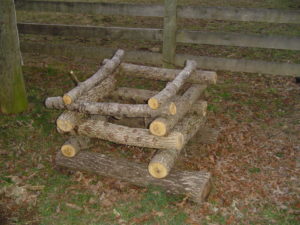At this point, our Grow Appalachia families in Wise County, Virginia have completed three of their mandatory classes, and they’re planting away. There have been some challenges so far in the growing season, as I’m sure other sites have experienced as well. The weather has been a big one. One of our most involved families from 2017 lost a big portion of their 2018 garden to flooding. They do plan to start again, but it’s been disheartening. Unknown pests have caused some troubles as well. One of the new participants awoke one morning to discover that 60 luffa gourd plants he had set out had vanished. Cut-worms were my first thought, but no remnants of the plants were left behind. I’m now leaning toward groundhogs, but I’m just not 100 percent sure. At any rate, being that the luffas require such a long growing season, that loss takes them out of the equation for 2018.
On a different topic, a question that’s come to me at various points deals with growing edible/marketable products under the forest canopy. I’ve mentioned our maple syrup project, and we now have a handful of folks in the county doing that at an entry-level commercial scale, but we’ve also had people curious about growing ginseng, black cohosh and other medicinal herbs. We’ve offered shiitake mushroom workshops at various times over the last few years. A recent program that Appalachia Sustainable Development did for us regarding their efforts was well-received by participants and I think provided them with some good guidance.
Given that we have so much mountainous forest here, I’d certainly classify forest farming as asset-based community development. Far too many landowners view their woodlands as potential pasture, so I’m giving myself the challenge of trying to offer more programming based on forest farming possibilities.
On my own property, I’m challenging myself to convert a large grassy hill bordered at the upper edge by woods into something productive. I’ve been researching edibles that do well in partial shade, and I think I’ve come to the conclusion that currants and gooseberries would be a wise choice for my “edible forest edge.” I’ve attempted to propagate some elderberries to place in a lower damp area, too, so maybe in a few years I’ll not only produce more fruits but cut down on my mowing.




Leave A Comment